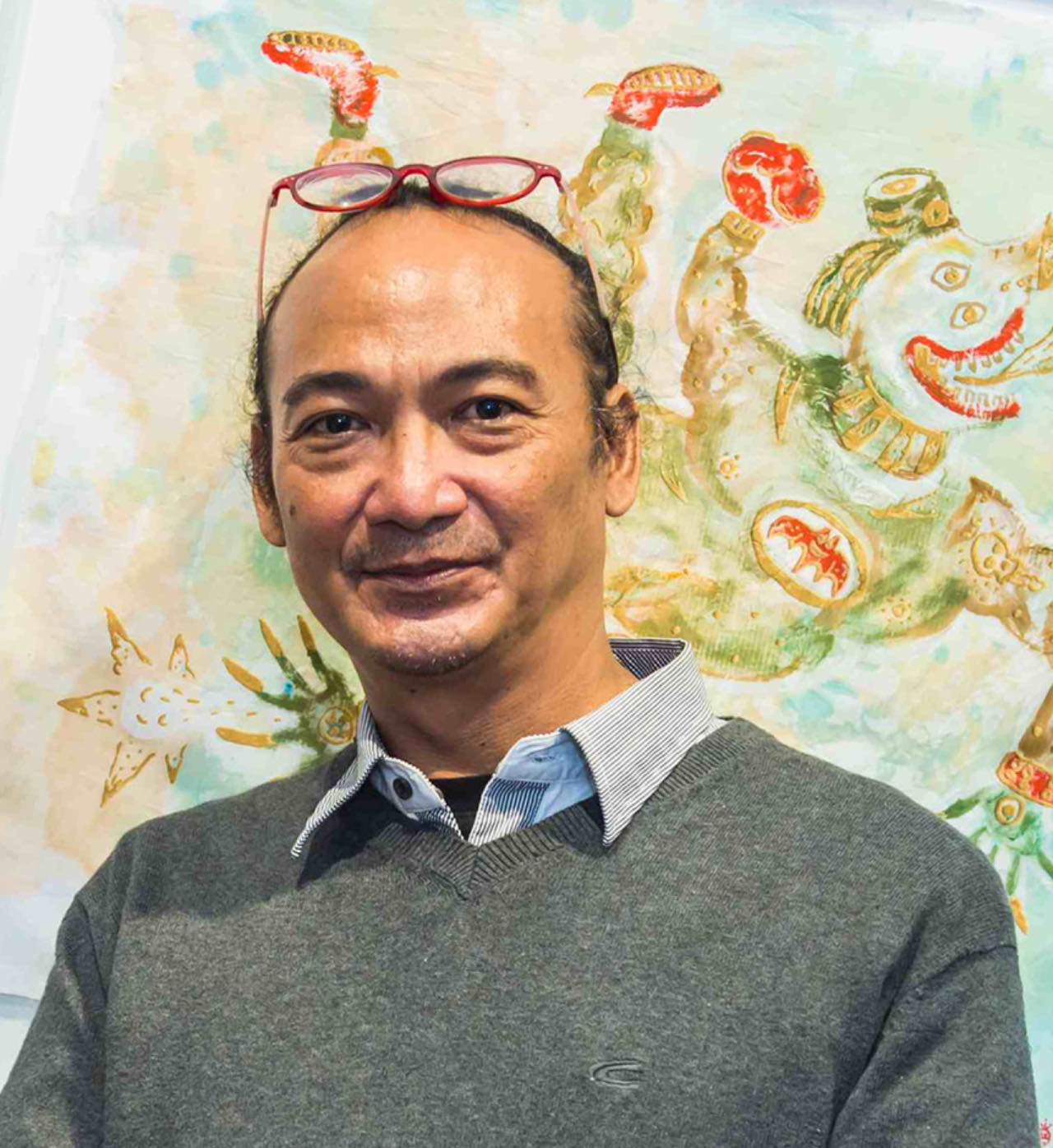犀牛是稀有动物,其中一种生活在爪哇岛上。很久以前,许多人为了犀牛角贸易而猎杀这种动物,导致它的族群几乎在世界上消失了。
犀牛的鼻子顶部有角,外形非常独特,既强壮又可爱,尤其是头部。
这座雕塑的形状实际上是犀牛的头,实际上是互动作品,意味着人们可以与之互动,尤其是对儿童而言。
孩子们可以探索他们的活动,可以爬楼梯,也可以滑滑梯。他们也可以坐在或站在犀牛的后脑勺上,从犀牛的耳洞里倾听或窥视。
这座犀牛头雕塑的颜色是红色。在印尼,红色的含义是活着以及勇敢面对我们的生活。
Rhinos are rare animals, one of which lives on the island of Java.Long ago, many people hunted the animals for the rhino horn trade, which led to its population almost disappearing in the world. The rhino has a horn on top of its nose and has a very unique appearance, both strong and cute, especially the head.The sculpture is actually shaped like the head of a rhino and is actually interactive, meaning that people can interact with it, especially for children.Children can explore their activities, climb the stairs, and slide down the slide.They can also sit or stand on the back of the rhino's head, listening or peering through the ear holes.The color of the rhino head sculpture is red.In Indonesia, red

Heri Dono是日惹当代著名艺术家,也是20世纪90年代初第一位闯入全球艺术舞台的印尼人,印尼一代艺术家中的其中一员。从他早期的职业生涯开始,他就周游世界进行展览,并响应各国的研讨会邀请。
在国际当代艺术界,Heri Dono以其装置作品而闻名,其中许多作品的灵感,来自于他对爪哇复杂的皮影剧院瓦扬的实验。瓦扬的表演包含了许多艺术和非艺术元素:视觉艺术、咒语、声音、讲故事、社会批评、幽默以及对生活哲学的神话宣传。这些组成部分被合并到艺术作品的叙事中,以提供一个通用的解释,其中添加了多媒体元素,再加上瓦扬表演活动的设置,这为观众之间的社交互动提供了空间。对振兴深深植根于印尼传统的艺术的兴趣,被heri表达在这些富有创意的艺术品里。
在他的许多装置和表演中,Heri Dono有效利用了“表演性和互动性”,使作品与观众进行了互补的对话。
在他的绘画中,Heri Dono充分利用了狂野的变形和自由的幻想,从中产生了瓦扬故事中的人物。除此之外,他还增加了对儿童动画片、动画电影和漫画的渊博知识和兴趣。赫里·多诺的画布上总是充满了令人惊叹的人物,这些人物交织着奇幻和荒诞的故事。Heri Dono有时会在其中插入他自己对印尼国内外社会政治问题的批评言论。
Heri Dono是唯一一位受邀参加威尼斯双年展(2003)的印尼当代艺术家。他的奖项包括荷兰克劳斯王子文化与发展奖(1998)、联合国教科文组织奖(2000)和印度尼西亚政府颁发的视觉艺术奖(2014)。他参加了300多个展览和35个国际双年展,包括Kochi Muziris双年展(2018)、曼谷艺术双年展、第56届威尼斯双年展:Voyage Trokomod(2015)、第50届威尼斯紧急地带双年展和广州三年展(2011);光州双年展(2006和1995);沙迦双年展(2005);台北双年展(2004);威尼斯双年展(2003)亚太三年期(2002和1993);横滨三年展(2001);哈瓦那双年展(2000);上海双年展(2000);悉尼双年展(1996);圣保罗双年展(2004和1996)。
Heri Dono is a leading Yogyakarta-based contemporary artist, and the first Indonesian to break into the global art scene during the early 1990s. He is a member of the generation of Indonesian artists that began their careers in the 1980s. Since his early career, he has traveled around the world to exhibit and respond to workshop invitations from various countries.
Heri Dono is well known in the international contemporary arts community for his installation works, many of which were inspired by his experiments with wayang, the complex shadow puppet theater of Java. Wayang performances are comprised of a number of artistic and non-artistic elements: visual arts, mantra, sound, storytelling, social criticism, humor and for the mythological promotion of a philosophy of life. These components are merged into the artwork’s narrative to give a generic interpretation to which elements of multimedia are added. Coupled with the setting of a wayang performance event, this provides a space for social interactions among the audience. These creati